Machine Intelligence
Kelvin K. L. Wong
Visit to download the full and correct content document: https://ebookmass.com/product/cybernetical-intelligence-engineering-cybernetics-with -machine-intelligence-kelvin-k-l-wong/
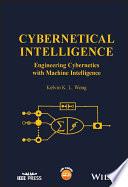
More products digital (pdf, epub, mobi) instant download maybe you interests ...
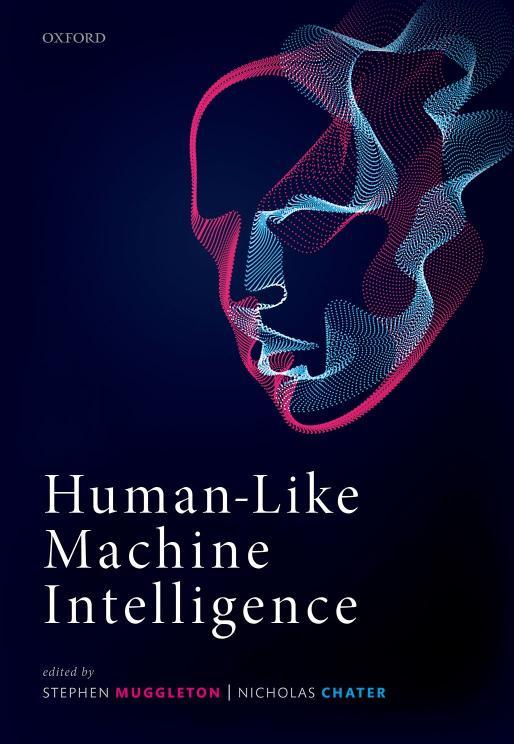
Human-Like Machine Intelligence Stephen Muggleton
https://ebookmass.com/product/human-like-machine-intelligencestephen-muggleton/
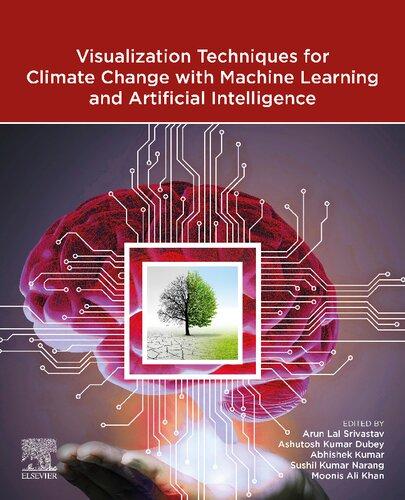
Visualization Techniques for Climate Change with Machine Learning and Artificial Intelligence Arun Lal Srivastav
https://ebookmass.com/product/visualization-techniques-forclimate-change-with-machine-learning-and-artificial-intelligencearun-lal-srivastav/
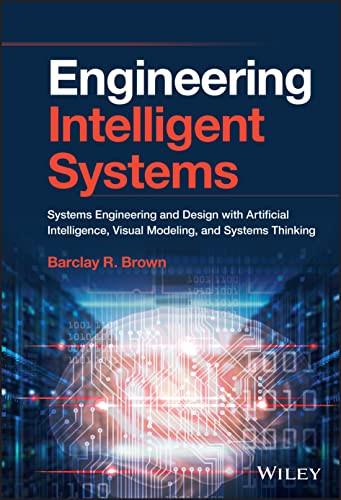
Engineering Intelligent Systems: Systems Engineering and Design with Artificial Intelligence, Visual Modeling Barclay R. Brown
https://ebookmass.com/product/engineering-intelligent-systemssystems-engineering-and-design-with-artificial-intelligencevisual-modeling-barclay-r-brown/
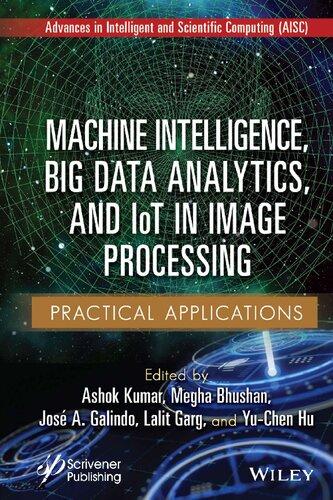
Machine Intelligence, Big Data Analytics, and IoT in Image Processing Ashok Kumar
https://ebookmass.com/product/machine-intelligence-big-dataanalytics-and-iot-in-image-processing-ashok-kumar/
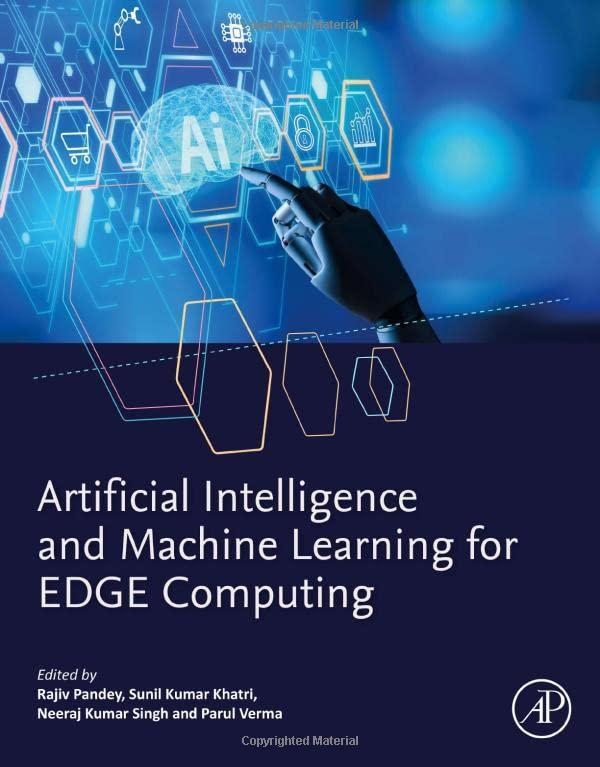
Artificial Intelligence and Machine Learning for EDGE Computing 1st Edition Rajiv Pandey
https://ebookmass.com/product/artificial-intelligence-andmachine-learning-for-edge-computing-1st-edition-rajiv-pandey/
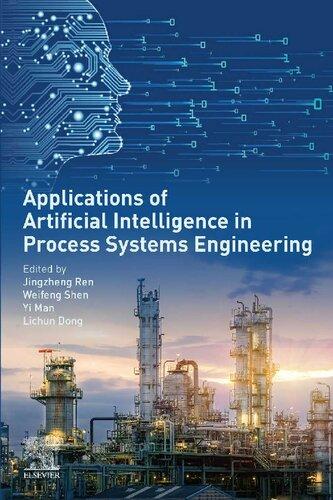
Applications of Artificial Intelligence in Process Systems Engineering Jingzheng Ren
https://ebookmass.com/product/applications-of-artificialintelligence-in-process-systems-engineering-jingzheng-ren/
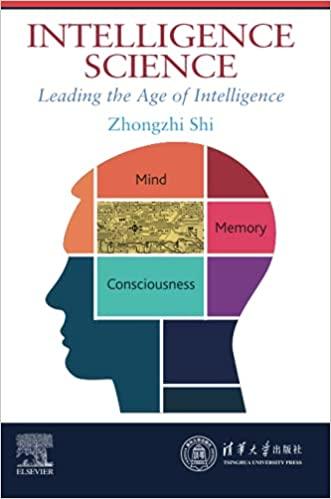
Intelligence Science: Leading the Age of Intelligence Zhongzhi Shi
https://ebookmass.com/product/intelligence-science-leading-theage-of-intelligence-zhongzhi-shi/
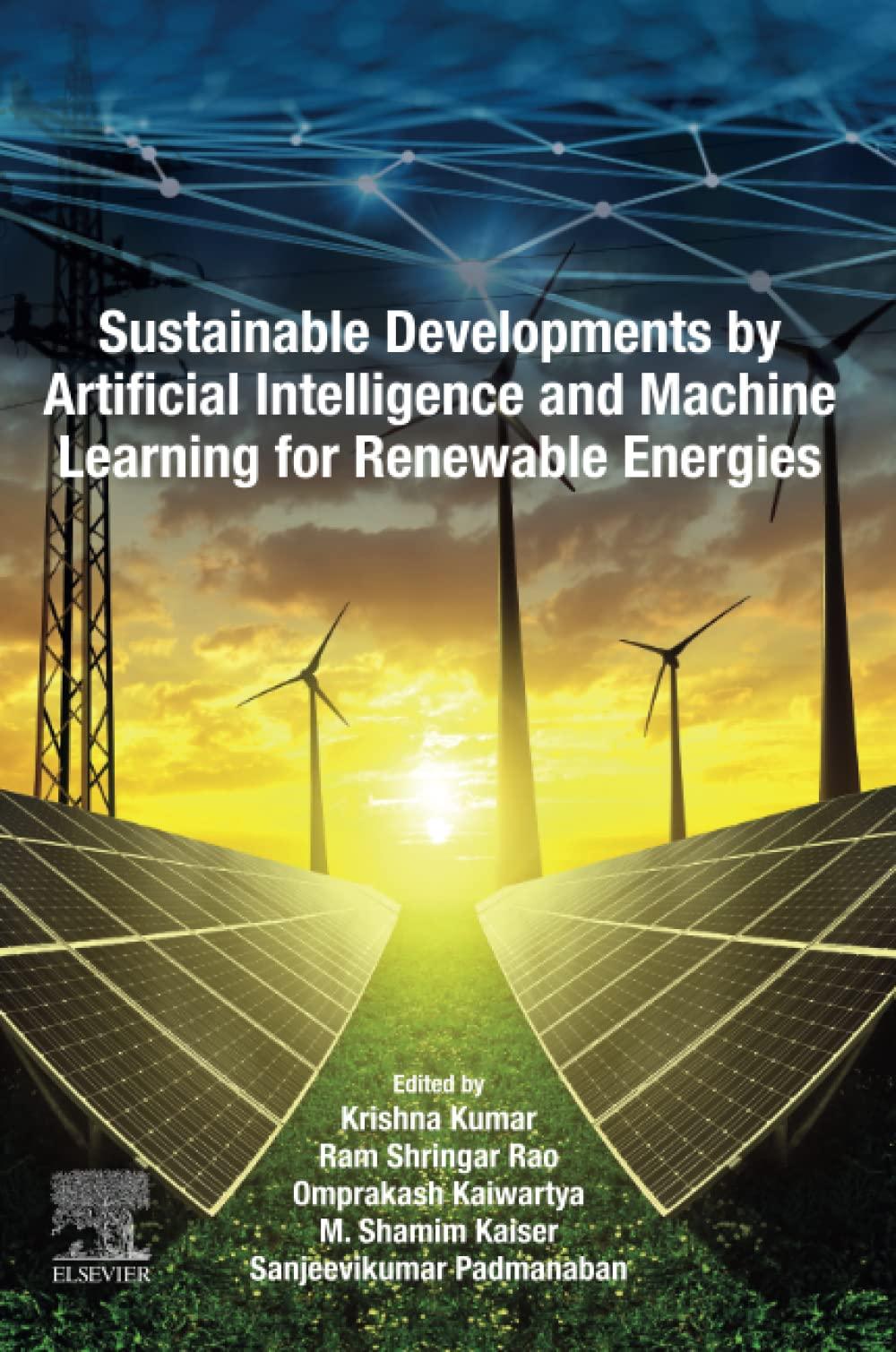
Sustainable Developments by Artificial Intelligence and Machine Learning for Renewable Energies Krishna Kumar
https://ebookmass.com/product/sustainable-developments-byartificial-intelligence-and-machine-learning-for-renewableenergies-krishna-kumar/
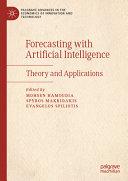
Forecasting with Artificial Intelligence: Theory and Applications Mohsen Hamoudia
https://ebookmass.com/product/forecasting-with-artificialintelligence-theory-and-applications-mohsen-hamoudia/
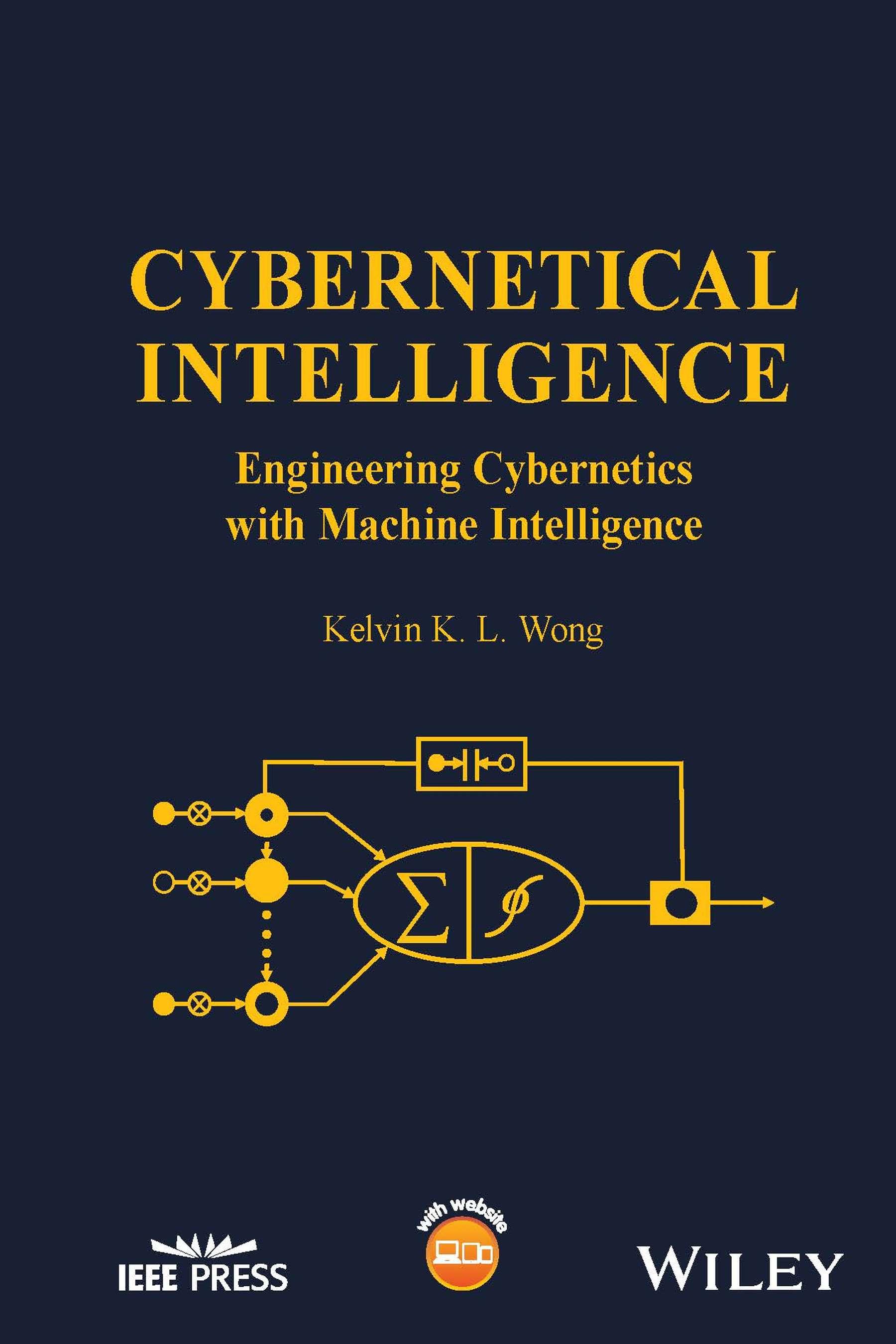
CyberneticalIntelligence
IEEEPress
445HoesLane Piscataway,NJ08854
IEEEPressEditorialBoard
SarahSpurgeon, EditorinChief
JónAtliBenediktssonBehzadRazaviJeffreyReed AnjanBoseJimLykeDiomidisSpinellis JamesDuncan AminMoeness DesineniSubbaramNaidu
HaiLi BrianJohnson AdamDrobot TomRobertazzi AhmetMuratTekalp
CyberneticalIntelligence
EngineeringCyberneticswithMachineIntelligence
KelvinK.L.Wong
Copyright©2024byTheInstituteofElectricalandElectronicsEngineers,Inc.Allrightsreserved.
PublishedbyJohnWiley&Sons,Inc.,Hoboken,NewJersey. PublishedsimultaneouslyinCanada.
Nopartofthispublicationmaybereproduced,storedinaretrievalsystem,ortransmittedinany formorbyanymeans,electronic,mechanical,photocopying,recording,scanning,orotherwise, exceptaspermittedunderSection107or108ofthe1976UnitedStatesCopyrightAct,without eitherthepriorwrittenpermissionofthePublisher,orauthorizationthroughpaymentofthe appropriateper-copyfeetotheCopyrightClearanceCenter,Inc.,222RosewoodDrive,Danvers, MA01923,(978)750-8400,fax(978)750-4470,oronthewebatwww.copyright.com.Requeststo thePublisherforpermissionshouldbeaddressedtothePermissionsDepartment,JohnWiley& Sons,Inc.,111RiverStreet,Hoboken,NJ07030,(201)748-6011,fax(201)748-6008,oronlineat http://www.wiley.com/go/permission.
Trademarks:WileyandtheWileylogoaretrademarksorregisteredtrademarksofJohnWiley& Sons,Inc.and/oritsaffiliatesintheUnitedStatesandothercountriesandmaynotbeusedwithout writtenpermission.Allothertrademarksarethepropertyoftheirrespectiveowners.JohnWiley& Sons,Inc.isnotassociatedwithanyproductorvendormentionedinthisbook.
LimitofLiability/DisclaimerofWarranty:Whilethepublisherandauthorhaveusedtheirbest effortsinpreparingthisbook,theymakenorepresentationsorwarrantieswithrespecttothe accuracyorcompletenessofthecontentsofthisbookandspecificallydisclaimanyimplied warrantiesofmerchantabilityorfitnessforaparticularpurpose.Nowarrantymaybecreatedor extendedbysalesrepresentativesorwrittensalesmaterials.Theadviceandstrategiescontained hereinmaynotbesuitableforyoursituation.Youshouldconsultwithaprofessionalwhere appropriate.Neitherthepublishernorauthorshallbeliableforanylossofprofitoranyother commercialdamages,includingbutnotlimitedtospecial,incidental,consequential,orother damages.Further,readersshouldbeawarethatwebsiteslistedinthisworkmayhavechangedor disappearedbetweenwhenthisworkwaswrittenandwhenitisread.Neitherthepublishernor authorsshallbeliableforanylossofprofitoranyothercommercialdamages,includingbutnot limitedtospecial,incidental,consequential,orotherdamages.
Forgeneralinformationonourotherproductsandservicesorfortechnicalsupport,pleasecontact ourCustomerCareDepartmentwithintheUnitedStatesat(800)762-2974,outsidetheUnited Statesat(317)572-3993orfax(317)572-4002.
Wileyalsopublishesitsbooksinavarietyofelectronicformats.Somecontentthatappearsinprint maynotbeavailableinelectronicformats.FormoreinformationaboutWileyproducts,visitour websiteatwww.wiley.com.
LibraryofCongressCataloging-in-PublicationDataappliedfor:
Hardback:9781394217489
CoverDesign:Wiley
CoverImage:Courtesyofauthor
Setin9.5/12.5ptSTIXTwoTextbyStraive,Pondicherry,India
Contents
Preface xv
AbouttheAuthor xix
AbouttheCompanionWebsite xxi
1ArtificialIntelligenceandCyberneticalLearning 1
1.1ArtificialIntelligenceInitiative 1
1.2IntelligentAutomationInitiative 4
1.2.1BenefitsofIAI 5
1.3ArtificialIntelligenceVersusIntelligentAutomation 5
1.3.1ProcessDiscovery 6
1.3.2Optimization 7
1.3.3AnalyticsandInsight 8
1.4TheFourthIndustrialRevolutionandArtificialIntelligence 9
1.4.1ArtificialNarrowIntelligence 10
1.4.2ArtificialGeneralIntelligence 12
1.4.3ArtificialSuperIntelligence 13
1.5PatternAnalysisandCognitiveLearning 14
1.5.1MachineLearning 15
1.5.1.1ParametricAlgorithms 16
1.5.1.2NonparametricAlgorithms 17
1.5.2DeepLearning 20
1.5.2.1ConvolutionalNeuralNetworksinAdvancingArtificialIntelligence 21
1.5.2.2FutureAdvancementinDeepLearning 22
1.5.3CyberneticalLearning 23
1.6CyberneticalArtificialIntelligence 24
1.6.1ArtificialIntelligenceControlTheory 24
1.6.2InformationTheory 26
1.6.3CyberneticSystems 27
1.7CyberneticalIntelligenceDefinition 28
1.8TheFutureofCyberneticalIntelligence 30
Summary 32
ExerciseQuestions 32 FurtherReading 33
2CyberneticalIntelligentControl 35
2.1ControlTheoryandFeedbackControlSystems 35
2.2Maxwell’sAnalysisofGovernors 37
2.3HaroldBlack 39
2.4NyquistandBode 40
2.5StaffordBeer 42
2.5.1CyberneticControl 42
2.5.2ViableSystemsModel 42
2.5.3CyberneticsModelsofManagement 43
2.6JamesLovelock 43
2.6.1CyberneticApproachtoEcosystems 43
2.6.2GaiaHypothesis 44
2.7MacyConference 44
2.8McCulloch –Pitts 45
2.9JohnvonNeumann 47
2.9.1DiscussionsonSelf-ReplicatingMachines 47
2.9.2DiscussionsonMachineLearning 48
Summary 48
ExerciseQuestions 49 FurtherReading 50
3TheBasicsofPerceptron 51
3.1TheAnalogyofBiologicalandArtificialNeurons 51
3.1.1BiologicalNeuronsandNeurodynamics 52
3.1.2TheStructureofNeuralNetwork 53
3.1.3EncodingandDecoding 56
3.2PerceptionandMultilayerPerceptron 57
3.2.1BackPropagationNeuralNetwork 59
3.2.2DerivativeEquationsforBackpropagation 59
3.3ActivationFunction 61
3.3.1SigmoidActivationFunction 61
3.3.2HyperbolicTangentActivationFunction 62
3.3.3RectifiedLinearUnitActivationFunction 62
3.3.4LinearActivationFunction 64
Summary 65
ExerciseQuestions 67 FurtherReading 67
4TheStructureofNeuralNetwork 69
4.1LayersinNeuralNetwork 69
4.1.1InputLayer 69
4.1.2HiddenLayer 70
4.1.3Neurons 70
4.1.4WeightsandBiases 71
4.1.5ForwardPropagation 72
4.1.6Backpropagation 72
4.2PerceptronandMultilayerPerceptron 73
4.3RecurrentNeuralNetwork 75
4.3.1LongShort-TermMemory 76
4.4MarkovNeuralNetworks 77
4.4.1StateTransitionFunction 77
4.4.2ObservationFunction 78
4.4.3PolicyFunction 78
4.4.4LossFunction 78
4.5GenerativeAdversarialNetwork 78 Summary 79 ExerciseQuestions 80 FurtherReading 81
5BackpropagationNeuralNetwork 83
5.1BackpropagationNeuralNetwork 83
5.1.1ForwardPropagation 85
5.2GradientDescent 85
5.2.1LossFunction 85
5.2.2ParametersinGradientDescent 88
5.2.3GradientinGradientDescent 88
5.2.4LearningRateinGradientDescent 89
5.2.5UpdateRuleinGradientDescent 89
5.3StoppingCriteria 89
5.3.1ConvergenceandStoppingCriteria 90
5.3.2LocalMinimumandGlobalMinimum 91
5.4ResamplingMethods 91
5.4.1Cross-Validation 93
5.4.2Bootstrapping 93
5.4.3MonteCarloCross-Validation 94
5.5OptimizersinNeuralNetwork 94
5.5.1StochasticGradientDescent 94
5.5.2RootMeanSquarePropagation 96
5.5.3AdaptiveMomentEstimation 96
5.5.4AdaMax 97
5.5.5MomentumOptimization 97
Summary 97
ExerciseQuestions 99 FurtherReading 100
6ApplicationofNeuralNetworkinLearningandRecognition 101
6.1ApplyingBackpropagationtoShapeRecognition 101
6.2SoftmaxRegression 105
6.3 K-BinaryClassifier 107
6.4RelationalLearningviaNeuralNetwork 108
6.4.1GraphNeuralNetwork 109
6.4.2GraphConvolutionalNetwork 111
6.5CyberneticsUsingNeuralNetwork 112
6.6StructureofNeuralNetworkforImageProcessing 115
6.7TransformerNetworks 116
6.8AttentionMechanisms 116
6.9GraphNeuralNetworks 117
6.10TransferLearning 118
6.11GeneralizationofNeuralNetworks 119
6.12PerformanceMeasures 120
6.12.1ConfusionMatrix 120
6.12.2ReceiverOperatingCharacteristic 121
6.12.3AreaUndertheROCCurve 122
Summary 123
ExerciseQuestions 123 FurtherReading 124
7CompetitiveLearningandSelf-OrganizingMap 125
7.1PrincipalofCompetitiveLearning 125
7.1.1Step1:NormalizedInputVector 128
7.1.2Step2:FindtheWinningNeuron 128
7.1.3Step3:AdjusttheNetworkWeightVectorandOutputResults 129
7.2BasicStructureofSelf-OrganizingMap 129
7.2.1PropertiesSelf-OrganizingMap 130
7.3Self-OrganizingMappingNeuralNetworkAlgorithm 131
7.3.1Step1:InitializeParameter 132
7.3.2Step2:SelectInputsandDetermineWinningNodes 132
7.3.3Step3:AffectNeighboringNeurons 132
7.3.4Step4:AdjustWeights 133
7.3.5Step5:JudgingtheEndCondition 133
7.4GrowingSelf-OrganizingMap 133
7.5TimeAdaptiveSelf-OrganizingMap 136
7.5.1TASOM-BasedAlgorithmsforRealApplications 138
7.6OrientedandScalableMap 139
7.7GenerativeTopographicMap 141
Summary 145 ExerciseQuestions 146 FurtherReading 147
8SupportVectorMachine 149
8.1TheDefinitionofDataClustering 149
8.2SupportVectorandMargin 152
8.3KernelFunction 155
8.3.1LinearKernel 155
8.3.2PolynomialKernel 156
8.3.3RadialBasisFunction 157
8.3.4LaplaceKernel 159
8.3.5SigmoidKernel 159
8.4LinearandNonlinearSupportVectorMachine 160
8.5HardMarginandSoftMargininSupportVectorMachine 164
8.6I/OofSupportVectorMachine 167
8.6.1TrainingData 167
8.6.2FeatureMatrixandLabelVector 168
8.7HyperparametersofSupportVectorMachine 169
8.7.1TheCHyperparameter 169
8.7.2KernelCoefficient 169
8.7.3ClassWeights 170
8.7.4ConvergenceCriteria 170
8.7.5Regularization 171
8.8ApplicationofSupportVectorMachine 171
8.8.1Classification 171
8.8.2Regression 173
8.8.3ImageClassification 173
8.8.4TextClassification 174
Summary 174 ExerciseQuestions 175 FurtherReading 176
9Bio-InspiredCyberneticalIntelligence 177
9.1GeneticAlgorithm 178
9.2AntColonyOptimization 181
x Contents
9.3BeesAlgorithm 184
9.4ArtificialBeeColonyAlgorithm 186
9.5CuckooSearch 189
9.6ParticleSwarmOptimization 193
9.7BacterialForagingOptimization 196
9.8GrayWolfOptimizer 197
9.9FireflyAlgorithm 199
Summary 200
ExerciseQuestions 201
FurtherReading 202
10Life-InspiredMachineIntelligenceandCybernetics 203
10.1Multi-AgentAISystems 203
10.1.1GameTheory 205
10.1.2DistributedMulti-AgentSystems 206
10.1.3Multi-AgentReinforcementLearning 207
10.1.4EvolutionaryComputationandMulti-AgentSystems 209
10.2CellularAutomata 211
10.3DiscreteElementMethod 212
10.3.1Particle-BasedSimulationofBiologicalCellsandTissues 214
10.3.2SimulationofMicrobialCommunitiesandTheirInteractions 215
10.3.3DiscreteElementMethod-BasedModelingofBiologicalFluidsand SoftMaterials 216
10.4SmoothedParticleHydrodynamics 218
10.4.1SPH-BasedSimulationsofBiomimeticFluidDynamic 219
10.4.2SPH-BasedSimulationsofBio-InspiredEngineeringApplications 220
Summary 221
ExerciseQuestions 222 FurtherReading 223
11RevisitingCyberneticsandRelationtoCyberneticalIntelligence 225
11.1TheConceptandDevelopmentofCybernetics 225
11.1.1AttributesofControlConcepts 225
11.1.2ResearchObjectsandCharacteristicsofCybernetics 226
11.1.3DevelopmentofCyberneticalIntelligence 227
11.2TheFundamentalIdeasofCybernetics 227
11.2.1SystemIdea 227
11.2.2InformationIdea 229
11.2.3BehavioralIdea 230
11.2.4CyberneticalIntelligenceNeuralNetwork 231
11.3CyberneticExpansionintoOtherFieldsofResearch 234
11.3.1SocialCybernetics 234
11.3.2InternalControl-RelatedTheories 237
11.3.3SoftwareControlTheory 237
11.3.4PerceptualCybernetics 238
11.4PracticalApplicationofCybernetics 240
11.4.1ResearchontheControlMechanismofNeuralNetworks 240
11.4.2BalanceBetweenInternalControlandManagementPower Relations 240
11.4.3SoftwareMarkovAdaptiveTestingStrategy 242
11.4.4TaskAnalysisModel 244
Summary 245
ExerciseQuestions 246
FurtherReading 247
12TuringMachine 249
12.1BehaviorofaTuringMachine 250
12.1.1ComputingwithTuringMachines 251
12.2BasicOperationsofaTuringMachine 252
12.2.1ReadingandWritingtotheTape 253
12.2.2MovingtheTapeHead 254
12.2.3ChangingStates 254
12.3InterchangeabilityofProgramandBehavior 255
12.4ComputabilityTheory 256
12.4.1ComplexityTheory 257
12.5AutomataTheory 258
12.6PhilosophicalIssuesRelatedtoTuringMachines 259
12.7HumanandMachineComputations 260
12.8HistoricalModelsofComputability 261
12.9RecursiveFunctions 262
12.10TuringMachineandIntelligentControl 263 Summary 264
ExerciseQuestions 265 FurtherReading 265
13EntropyConceptsinMachineIntelligence 267
13.1RelativeEntropyofDistributions 268
13.2RelativeEntropyandMutualInformation 268
13.3EntropyinPerformanceEvaluation 269
13.4Cross-EntropySoftmax 271
13.5CalculatingCross-Entropy 272
13.6Cross-EntropyasaLossFunction 273
13.7Cross-EntropyandLogLoss 274
13.8ApplicationofEntropyinIntelligentControl 275
13.8.1Entropy-BasedControl 275
13.8.2FuzzyEntropy 276
13.8.3Entropy-BasedControlStrategies 277
13.8.4Entropy-BasedDecision-Making 278
Summary 279
ExerciseQuestions 279
FurtherReading 280
14SamplingMethodsinCyberneticalIntelligence 283
14.1IntroductiontoSamplingMethods 283
14.2BasicSamplingAlgorithms 284
14.2.1ImportanceofSamplingMethodsinMachineIntelligence 286
14.3MachineLearningSamplingMethods 287
14.3.1RandomOversampling 288
14.3.2RandomUndersampling 290
14.3.3SyntheticMinorityOversamplingTechnique 290
14.3.4AdaptiveSyntheticSampling 292
14.4AdvantagesandDisadvantagesofMachineLearningSampling Methods 293
14.5AdvancedSamplingMethodsinCyberneticalIntelligence 294
14.5.1EnsembleSamplingMethod 295
14.5.2ActiveLearning 297
14.5.3BayesianOptimizationinSampling 299
14.6ApplicationsofSamplingMethodsinCyberneticalIntelligence 302
14.6.1ImageProcessingandComputerVision 302
14.6.2NaturalLanguageProcessing 304
14.6.3RoboticsandAutonomousSystems 307
14.7ChallengesandFutureDirections 308
14.8ChallengesandLimitationsofSamplingMethods 309
14.9EmergingTrendsandInnovationsinSamplingMethods 309
Summary 310
ExerciseQuestions 311
FurtherReading 312
15DynamicSystemControl 313
15.1LinearSystems 314
15.2NonlinearSystem 316
15.3StabilityTheory 318
15.4ObservabilityandIdentification 320
15.5ControllabilityandStabilizability 321
15.6OptimalControl 323
15.7LinearQuadraticRegulatorTheory 324
15.8Time-OptimalControl 326
15.9StochasticSystemswithApplications 328
15.9.1StochasticSysteminControlSystems 329
15.9.2StochasticSysteminRoboticsandAutomation 329
15.9.3StochasticSysteminNeuralNetworks 330 Summary 331
ExerciseQuestions 331 FurtherReading 332
16DeepLearning 333
16.1NeuralNetworkModelsinDeepLearning 335
16.2MethodsofDeepLearning 336
16.2.1ConvolutionalNeuralNetworks 337
16.2.2RecurrentNeuralNetworks 340
16.2.3GenerativeAdversarialNetworks 342
16.2.4DeepLearningBasedImageSegmentationModels 345
16.2.5VariationalAutoEncoders 348
16.2.6TransformerModels 350
16.2.7Attention-BasedModels 352
16.2.8Meta-LearningModels 354
16.2.9CapsuleNetworks 357
16.3DeepLearningFrameworks 358
16.4ApplicationsofDeepLearning 359
16.4.1ObjectDetection 360
16.4.2IntelligentPowerSystems 361
16.4.3IntelligentControl 362 Summary 362
ExerciseQuestions 363 References 364 FurtherReading 365
17NeuralArchitectureSearch 367
17.1NeuralArchitectureSearchandNeuralNetwork 369
17.2ReinforcementLearning-BasedNeuralArchitectureSearch 371
17.3EvolutionaryAlgorithms-BasedNeuralArchitectureSearch 374
17.4BayesianOptimization-BasedNeuralArchitectureSearch 376
17.5Gradient-BasedNeuralArchitectureSearch 378
17.6One-shotNeuralArchitectureSearch 379
17.7Meta-Learning-BasedNeuralArchitectureSearch 381
17.8NeuralArchitectureSearchforSpecificDomains 383
17.8.1CyberneticalIntelligentSystems:NeuralArchitectureSearchin Real-World 384
17.8.2NeuralArchitectureSearchforSpecificCyberneticalControlTasks 385
17.8.3NeuralArchitectureSearchforCyberneticalIntelligentSystemsin Real-World 386
17.8.4NeuralArchitectureSearchforAdaptiveCyberneticalIntelligent Systems 388
17.9ComparisonofDifferentNeuralArchitectureSearchApproaches 389 Summary 391
ExerciseQuestions 391
FurtherReading 392
FinalNoteson CyberneticalIntelligence 393 Index 399
Preface
Lifeevolvesintoexistencefromtheedgeofchaosandbuildsupanewmechanism basedonasetofrulesthatgovernsthelawofsurvival,reproduction,andevolution.Thiscomplexsetofrulesthatallowsalivingthingtointeractwithitsenvironmentcomesintobeingfromthebeginningoflifeitself,whichissomethingone canunderstandasintelligence.Allthewondersofart,design,sciences,etc.,inthe worldmakeusponderuponthequestionoftheages,ontheoriginofcreationand theexistenceoflifeitselfandtheevolutionofintelligencethatcomesintobeing.
“Theimportantthingisnottostopquestioning,” isafamousquotationbyAlbert Einsteinfrom1955.Arobotgainsintelligencebyquestioningandseekinganswers, whichformexamplesforthelabelsfortheunseenexamples.However,willthe robothaveacreativemindsimilartothatofEinstein?Thisleadsustothequestion ofwhethercreativitycanbeprogrammed.Canananalogybebridgedbetweenthe robot’sexperienceindevelopingmultiplesearchwaypathsfortheoptimalsolutionandanintelligentbeing’sintuitiontodesigncreativesolutions?
Artificialintelligence(AI)isbuiltonthepillarsofafewmajorbranchesofscienceandengineering,namely,systematology,informationtheory,andcybernetics,whichistypicallybasedoncontroltheorythatwasderivedfromthestudiesof NorbertWiener,theworld-renownedfatherofcybernetics.In1954,Hsue-sen Tsienfoundedengineeringcyberneticsbypublishingthefamousengineering cyberneticsinAmerica.Onthebasisofcybernetics,apredictivesystemmaybe regardedasamultiplefeedbacksystem.Theframeworkofamultilayerperceptron aswellasthatofabackpropagationneuralnetworkcanbebasedonthetheoretic ofsystemcontrolinmoderncybernetics.Withthistypeofthinking,perceptron theoryoffersacohesiveapproachtothestatisticalmechanicsandprinciplesof cyberneticsasabasisforthesuccessfulneuralnetworkmodeling.
Afeedbackcontroller’soperationistochangethebehaviorofasystemfundamentally.Feedbackcontrolsystemssampleasystem’soutputs,comparethemtoa setofdesiredoutputs,andthenutilizetheresultingerrorsignalstocomputethe
system’scontrolinputsinsuchawaythattheerrorsareminimized.Artificially builtfeedbackcontrolsystems,whichareutilizedtogovernindustrial,automotive,andaeronauticalsystems,areresponsiblefortoday’saerospaceachievements. Biologicalsystemsarefullofnaturallyoccurringfeedbackcontrols.Thecell,oneof themostbasicofalllifeforms,regulatesthepotentialdifferenceacrossthecell membranetopreservehomeostasis.Althoughneuralnetworkcontrollersare adaptivelearningsystems,theydonotneedtheconventionalassumptionsof adaptivecontroltheory,suchasparameterlinearityandthepresencearegression matrix.Itisdemonstratedindetailtheprocesstocreateneuralnetworkbasedcontrollersforcyberneticalsystems,ageneralcategoryofnonlinearsystems,complicatedindustrialsystemswithvibrationsandflexibilityeffects,forcecontrol,motor dynamicscontrol,andotherapplications.Thesearegivenforbothcontinuoustimeanddiscrete-timeweighttuning.
IntegrationofAIandcyberneticscanproduceapplicationsinpredictivecontrol, patternrecognition,andclassification,whichessentiallyarebasedonthesame fundamentals.Thisbookproposesforthefirsttimethenovelperspectiveof machineintelligence,whichistermedas CyberneticalIntelligence.Suchanewfield willhaveextensiveandpracticalapplicationsinnotjustthecombinatorialoptimizationproblemsbutalsoinpatternrecognition,datamining,andotherrelated machineintelligencebasedcyberneticsproblems.
Thekeyconceptof CyberneticalIntelligence grewfromadesiretounderstand andbuildsystemsthatcanachievegoals,whethercomplexhumangoalsorjust goals.Itisevendeeperunderlyingconceptualterm.Cyberneticsholdstheworld sufficientlytogainfeedbackinordertocorrecttheactionstoachievegoals.Itis mutualcombinationofautomatedcommunicationandcontrolsystembetween artificiallyintelligentmachinesandtheenvironmentwithsubsequentstrongsupportfrommachinelearning;theconceptsofsystemsthinkingandsystemstheory becameintegralpartsoftheestablishedscientificlanguageof CyberneticalIntelligence andcanleadtonumerousnewmethodologiesandapplications.
Thebasicideasof CyberneticalIntelligence canbetreatedwithoutreferenceto electronics,buttheyarefundamentallychallenging;soalthoughadvancedtechniquesmaybenecessaryforadvancedapplications,agreatdealcanbedone,especiallyinbiologicalsciences,bytheuseofmathematicalderivations,providedthey areusedwithaclearanddeepunderstandingoftheprincipalsinvolved.
Thisbookisintendedtoprovideaconciseconceptualizationof Cybernetical Intelligence .Itstartsfromcommonplaceandwell-understoodconceptsandproceeds,stepbystep,toshowhowtheseconceptscanbemadeexactandhowthey canbedevelopeduntiltheyleadintosubjectssuchasfeedback,stability,regulation,ultrastability,information,coding,noise,andothercybernetictopics.Closedloopapplicationsandfeaturesofneuralnetworkareexaminedanddevelopedin greatdetailinthisbook,employingmathematicalstabilityproofapproachesthat
illustratehowtoconstructneuro-controllerswhilealsoensuringtheirstabilityand performance.Controlengineeringbasedconcepts,afamilyofmulti-loopneurocontrollersforvariousapplicationshavebeencreatedmethodically.
Therearestrategiesforbothcontinuous-timeanddiscrete-timeweighttuning given.Thebookisintendedforstudentstakingasecondsemesterincontroltheory,aswellasengineersinacademiaandindustrywhoconstructfeedbackcontrollersforcomplexsystemsfoundincommercial,industrial,andmilitary applications.Themanytypesofneuro-controllersareorganizedintablesforsimplereferencewhenitcomestodesignprocedures.
Thismaterialisacomprehensiveexplorationoftheadvancedterminologiesin AIandcybernetics.InChapter1,theconceptofAIanditsrelationtocybernetics areintroduced.Chapter2delvesintothetheoryofcyberneticalintelligenceand control.Chapter3coversthebasicsofperceptron,includingitsactivationfunction.Thestructureofthemultilayerperceptronneuralnetworkisdiscussedin Chapter4,whileChapter5coversthebackpropagationalgorithmanditsderivatives,aswellastheresamplingrate.Chapter6focusesonneuralnetworkapplicationsinlearningandrecognition.Chapter7exploresself-organizingandits applicationsinAI,andChapter8coverssupportvectormachinesandtheirapplications.Chapters9and10delveintobio-andlife-inspired CyberneticalIntelligence.Chapters11and12revisitcyberneticsanditsrelationto Cybernetical Intelligence andTuringmachines.Entropyconceptsandsamplingmethodsin CyberneticalIntelligence arecoveredinChapters13and14.Chapters15and16 describelinearsystemsanddeeplearning,includingtheirmethodsandapplications.Finally,Chapter17focusesonneuralarchitecturesearch,includingits methodsandapplications.Everychapterpresentsitsowncharacteristicconcept, andtheconcatenationoftheseconceptsgeneratesamindmapandgeneralframeworkfortheformulationofmachinelearningfromthecyberneticsperspectiveand encompassingthe CyberneticalIntelligence philosophy.Thephilosophicalinsights andmathematicaltheoriesinthisbookwillgiveustheadequateknowledgenecessaryforbuildingAI.
Itistheauthor’sbeliefthatthesubjectfoundediswellunderstoodandisthen builtupcarefully,stepbystep,withadvancedmathematical,computing,andengineeringknowledge.Havingspentyearsconsolidatinganddevelopingtheconceptualroadmapofmachinelearningfromthecyberneticsperspective,theauthoris proudtopresentthenovelworkon CyberneticalIntelligence totheacademiccommunitywiththeultimateaimoftrainingthenextgenerationofAIcybernetists.
AbouttheAuthor

Prof.Dr.KelvinK.L.Wongisadistinguishedexpert inmedicalimageprocessingandcomputational science,whoearnedhisPh.D.fromTheUniversity ofAdelaide.Withastrongacademicbackground fromNanyangTechnologicalUniversityandThe UniversityofSydney,hehasbeenattheforefront ofmergingthefieldsofcyberneticsandartificial intelligence(AI).Heiswidelyrecognizedforintroducingtheterm “CyberneticalIntelligence” and istheinventorandfounderoftheDeepRedAI system.Dr.Wong’simpactfulresearchinAIhas yieldedsignificantachievementswiththepotential topositivelyimpacthumanity.Heistheauthorofinfluentialbookssuchas MethodsinResearchandDevelopmentofBiomedicalDevices and Computational Hemodynamics–Theory,Modelling,andApplications.Withextensiveexperience asanassociateeditorandguesteditorforesteemedbiomedicalengineeringand computationalintelligencejournals,hehascontributedextensivelytothefield. AsaninternationallyrecognizedbiomedicalengineeringscientistandAI cybernetist,Dr.WongwasnamedamongStanfordUniversity’stop1.3%biomedicalengineeringresearchersin2020.Hehasactivelyparticipatedinresearching themanagementandcontrolofCOVID-19andisadedicatedsupporterand donortoUNICEF,advocatingforkindnessandhumanrights.Throughouthis professorship,hehasmentorednumerousstudents,providinginvaluableguidanceandshapingtheircareers.LeadingateamofexpertsinAI,healthcare, diseasemanagement,anddiagnosis,Dr.Wong’sexpertisehasbeeninstrumental insupportinggovernmentprojectsandinitiativesindevelopingcountries.

